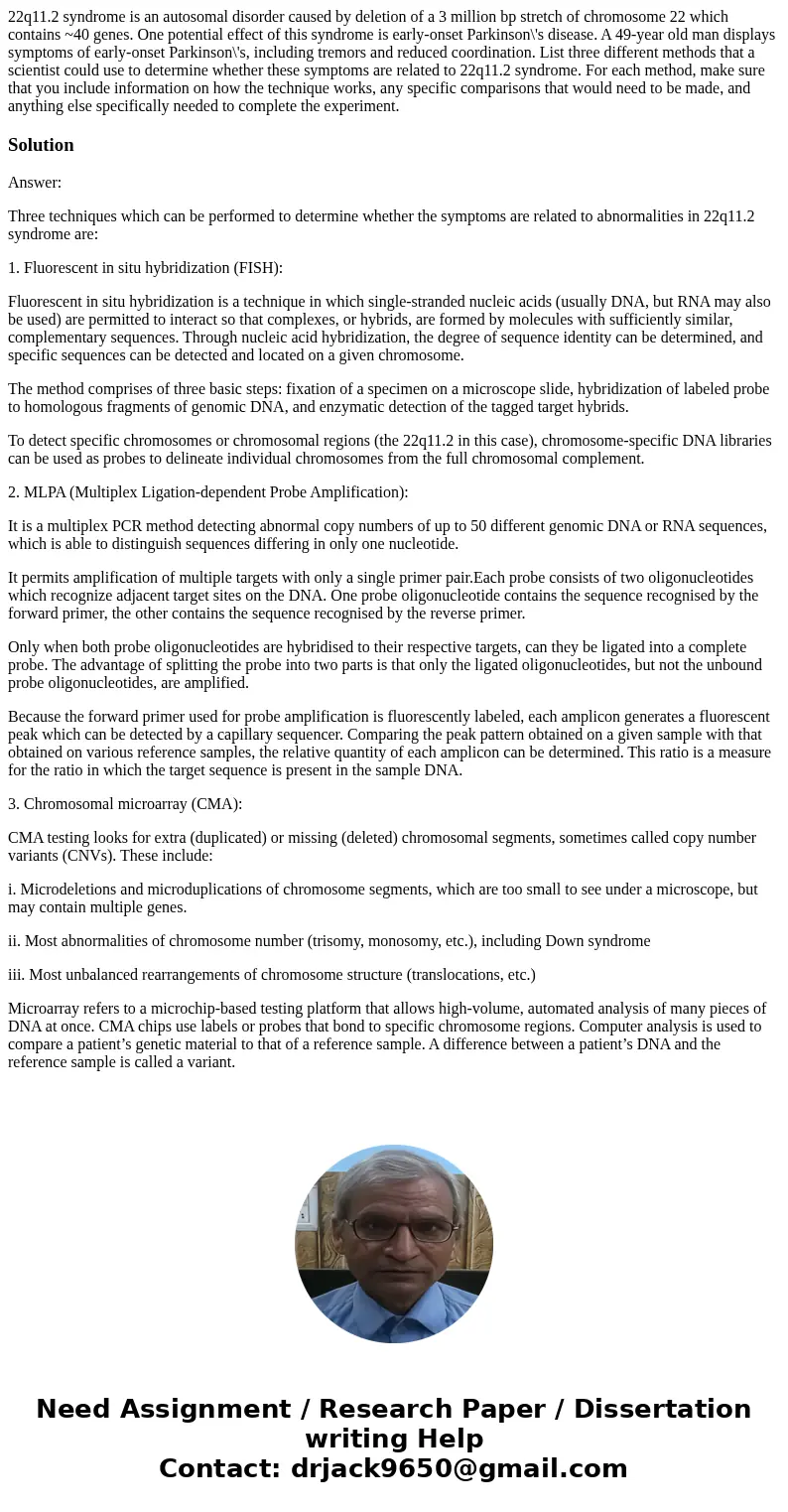22q112 syndrome is an autosomal disorder caused by deletion
Solution
Answer:
Three techniques which can be performed to determine whether the symptoms are related to abnormalities in 22q11.2 syndrome are:
1. Fluorescent in situ hybridization (FISH):
Fluorescent in situ hybridization is a technique in which single-stranded nucleic acids (usually DNA, but RNA may also be used) are permitted to interact so that complexes, or hybrids, are formed by molecules with sufficiently similar, complementary sequences. Through nucleic acid hybridization, the degree of sequence identity can be determined, and specific sequences can be detected and located on a given chromosome.
The method comprises of three basic steps: fixation of a specimen on a microscope slide, hybridization of labeled probe to homologous fragments of genomic DNA, and enzymatic detection of the tagged target hybrids.
To detect specific chromosomes or chromosomal regions (the 22q11.2 in this case), chromosome-specific DNA libraries can be used as probes to delineate individual chromosomes from the full chromosomal complement.
2. MLPA (Multiplex Ligation-dependent Probe Amplification):
It is a multiplex PCR method detecting abnormal copy numbers of up to 50 different genomic DNA or RNA sequences, which is able to distinguish sequences differing in only one nucleotide.
It permits amplification of multiple targets with only a single primer pair.Each probe consists of two oligonucleotides which recognize adjacent target sites on the DNA. One probe oligonucleotide contains the sequence recognised by the forward primer, the other contains the sequence recognised by the reverse primer.
Only when both probe oligonucleotides are hybridised to their respective targets, can they be ligated into a complete probe. The advantage of splitting the probe into two parts is that only the ligated oligonucleotides, but not the unbound probe oligonucleotides, are amplified.
Because the forward primer used for probe amplification is fluorescently labeled, each amplicon generates a fluorescent peak which can be detected by a capillary sequencer. Comparing the peak pattern obtained on a given sample with that obtained on various reference samples, the relative quantity of each amplicon can be determined. This ratio is a measure for the ratio in which the target sequence is present in the sample DNA.
3. Chromosomal microarray (CMA):
CMA testing looks for extra (duplicated) or missing (deleted) chromosomal segments, sometimes called copy number variants (CNVs). These include:
i. Microdeletions and microduplications of chromosome segments, which are too small to see under a microscope, but may contain multiple genes.
ii. Most abnormalities of chromosome number (trisomy, monosomy, etc.), including Down syndrome
iii. Most unbalanced rearrangements of chromosome structure (translocations, etc.)
Microarray refers to a microchip-based testing platform that allows high-volume, automated analysis of many pieces of DNA at once. CMA chips use labels or probes that bond to specific chromosome regions. Computer analysis is used to compare a patient’s genetic material to that of a reference sample. A difference between a patient’s DNA and the reference sample is called a variant.

 Homework Sourse
Homework Sourse